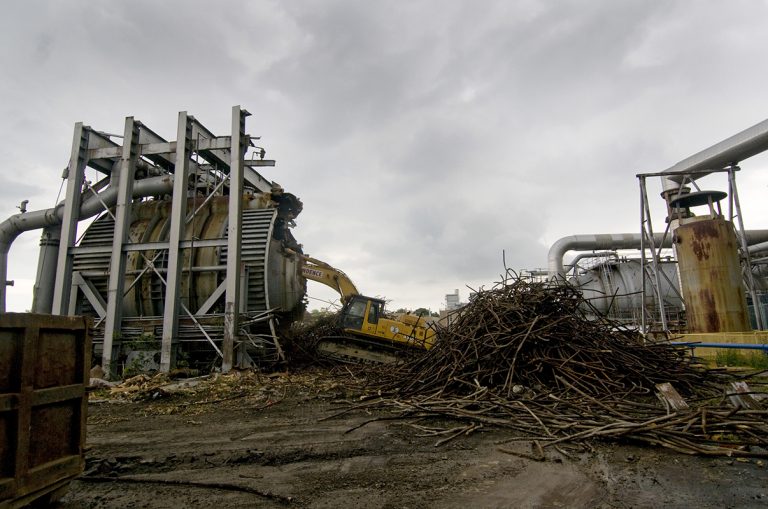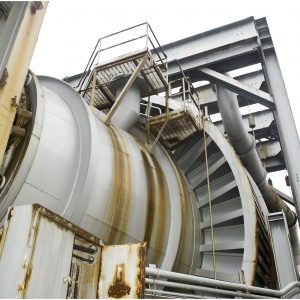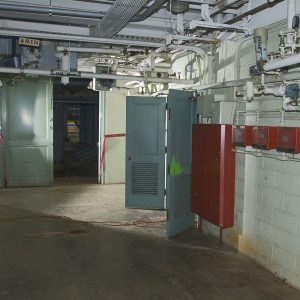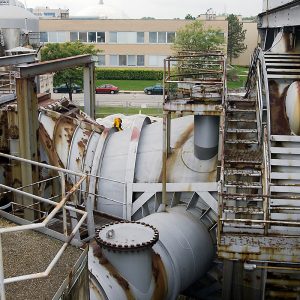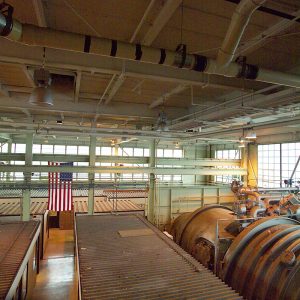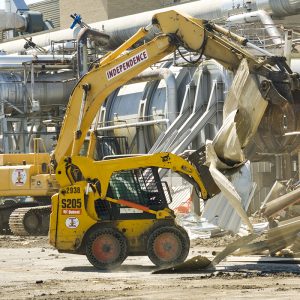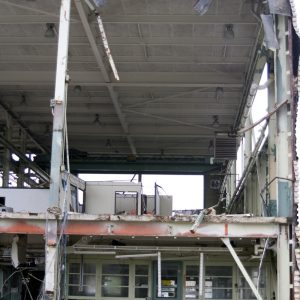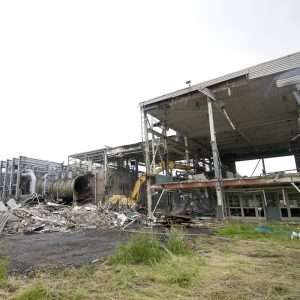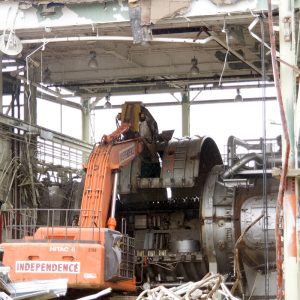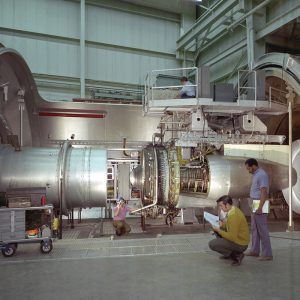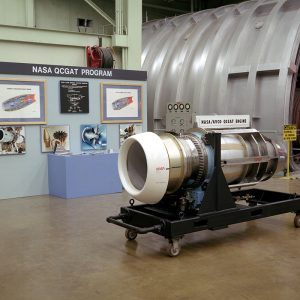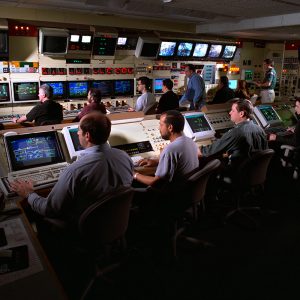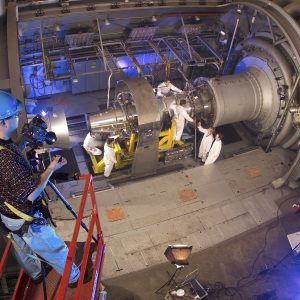PSL’s Final Years
NASA ceased operation of PSL No. 1 and 2 in the late 1970s. After nearly 30 years of disuse, NASA demolished the facility in 2009.
Overview
NASA stopped using the Propulsion Systems Laboratory (PSL) No. 1 and 2 in 1979 after the test of of a Pratt & Whitney TF-34 turbofan in Chamber No. 1. PSL No. 1 and 2 had played a key role for 27 years in the continual development of propulsion systems, but the engines had outgrown the facility. While PSL No. 3 and 4 maintained rigorous test schedules, the original chambers sat idle for 25 years. In 2004, NASA Glenn Research Center began efforts to remove the structure from its campus. Demolition of the original PSL facility began in late 2008 and was completed in the summer of 2009.
Shutdown and Idle Years
Congress dramatically reduced NASA’s funding as the Apollo Program wound down in the early 1970s. The cutbacks hit the Lewis Research Center particularly hard. After large Reduction In Force actions in 1973 and 1974, the center’s budgets and staffing levels continued to decline throughout the decade. Lewis could not keep all four PSL chambers and all of the other engine test rigs operating. Management decided to shut down PSL No. 1 and 2 so that its twenty technicians would be freed up to help keep the other test rigs operating. The final runs took place in 1979 using a Pratt & Whitney TF-34 turbofan.
In the ensuing years, the center wedged temporary offices in between and around the two altitude chambers on the second floor of the PSL Shop and Access Building to house engineering and maintenance staff. Control panels and other equipment was steadily removed from the control room for use in other facilities. Over the years the myriad of pipes, access platforms, and other equipment on the outside of the facility suffered from lack of maintenance. The Equipment Building and PSL No. 3 and 4, however, continued to operate and were upgraded over the years.
Documents
Gallery
Demolition Decision
The center first obtained design services to develop the demolition plans and solicited bids to perform the work. The contract for the demolition was awarded in 2007. The demolition consisted of three phases: relocation of the utilities, remediation of lead paint and asbestos, and the actual demolition of the facility. The effort began in the spring of 2008 with the installation of perimeter fencing around the site. This was followed by lead paint and asbestos abatement, including the removal of the transite walls around the Access Building and Service Support Building.
The main demolition began in May 2009 with the removal of the Service Support Building and external pipes. The crews ramped up the work in June as the bulldozers tore into the Shop and Access Building and methodically ripped the two altitude tanks into pieces. The interior of the massive primary coolers stood exposed for the first time in 60 years as the rubble piled up around them. The cooling vanes lay in tangled piles. By August the coolers had been knocked down, and the debris had been loaded into trucks and hauled away. Approximately 1,000 tons of steel were taken away and recycled. Crews removed the concrete foundations, graded the area, and slowly transformed the site into a parking lot and grassy area.
Documents
- PSL Historical Mitigation Agreement (2007)
- History of PSL No. 1 and 2 slides (2006)
- Demolition Plan and Environmental slides (2006)
- Impact Historical Mitigation slides (2006)
Gallery
PSL Today
Today PSL No. 3 and 4 is NASA’s only facility capable of testing full-scale airbreathing engines at simulated altitude conditions. It can simulate altitudes up to 90,000 feet and speeds up to Mach 3 in one cell and Mach 6 in the other. PSL No. 3 and 4 maintains a busy schedule, and the original Equipment Building remains in use. PSL’s versatility has allowed it to keep pace with unique test requirements for NASA research programs. The facility has also helped develop advanced altitude testing methods such as multi-axis thrust measurement, vectored and reverse exhaust gas collection, flight transient simulation, and others. The PSL has also recently added the capability to simulate clouds of ice crystals and liquid water droplets.
Documents
- PSL No. 3 and 4 website (2018)
- Advances in PSL Test Capabilities (2006)
- Hypersonics Test in PSL (1998)

